![]()
There is an infinite number of search query variations potential customers can use discover your offerings on search engines — the first step of any SEO campaigns should be to determine the most optimal keywords you should target for your site. This process is called keyword research. Execution of an SEO strategy without proper keyword research is like firing a gun with your eyes closed.
Typically, the basic steps of keyword research include:
Let’s take a look at these steps in a bit more detail.
At the start of the keyword research process, the first step is to brainstorm some stem keywords based on the current understanding of the site being optimized. The goal is to answer the question “Which queries would our target demographic use to find our content?”
In order to brainstorm keywords from multiple perspectives, this process can often benefit from involving people outside of the SEO team, such members from sales or customer service department, existing customers and clients, or others in your key demographic. The list of stem keyword doesn’t have to be huge, but it should cover all of the business objectives the website is trying to achieve.
After getting a list of stem keywords, SEOs will try to gather as many related keywords as possible.
Common places for SEOs to look for extra keywords include:
Understanding keyword demand is important because SEOs will need to know which keywords are being used by target audience before creating their SEO strategy. Common metrics to identify keywords’ search demand include:
After understanding which keywords are being used by the target audience, SEOs will analyze which keywords are going to help the website achieve its business goals. Historic data of how target audiences have engaged with the website can be very helpful for this purpose. Useful metrics for determining keyword value include:
It’s not worthwhile to optimize for a keyword that you have a very low chance of ever ranking in the top 30 positions for. Therefore, it’s important to take a look at the competitive environment before choosing keywords to target. How authoritative the site you’re optimizing for is, and how well the page content matches the intent of the search query will determine whether the site has a chance of ranking well. Likewise, not all keyword SERPs are created equally — some may not have a large number of organic positions available on page 1.
By this step, you will now have a list of keywords with demand, value, and competitive metrics. Use this criteria to pick target keywords and prioritize efforts. Not all keywords will meet all of the following criteria, and it’s not an exact science. Every site will need a different strategy. Ideally, target keywords should be:
Every site needs a customized approach for their keyword research process, and metrics used will differ depending on industry and type of site, but this common framework should work across all countries, industries, and languages.
The above section summarizes what a basic keyword research process looks like for any country, search engine, or language. However, for Baidu, there many additional elements that need to be taken into consideration.
Because most of the SERPs for the head terms in Baidu are crowded with rich snippets, even if your site is ranking very high organically, the actual position might still be on page 2 or bottom of page 1. Since long tail keywords typically have less rich snippets, focusing on long tail keywords is an important strategy.
For example, a query for “Jackie Chan” on Baidu only shows 3 organic results (shown in blue) on page 1. All others are ads or Baidu’s own properties (shown in red).
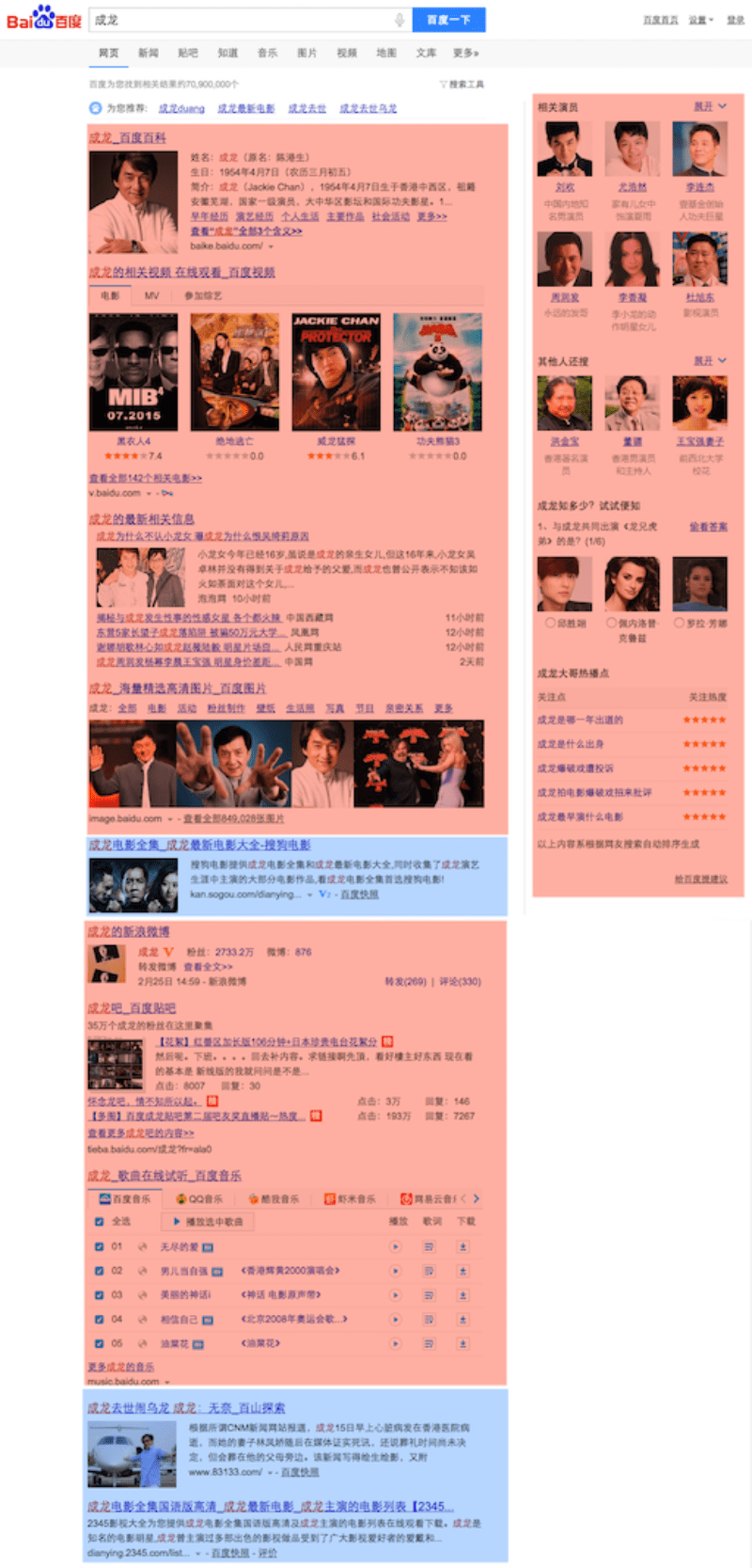
Because Google is not popular in China, the typical go-to data source for most SEOs in the West, Google Adwords Keyword Planner, is is not able to provide accurate or useful data. Likewise, since most other 3rd party keyword research tools are also based on Google Adwords Keyword Planner data, almost all of the keyword tools designed for Google will not work well for Baidu.
So while the approach to keyword research is similar, the tools you will need to use will be completely different. Below, we’ll introduce the most useful tools for Baidu keyword research, and help explain how to use each one.
One of the worst mistakes SEOs can make is using Google Translate to translate their English keyword lists to Chinese and use this as their Chinese targeted keywords list. Do not do this. Using Google Translate will guarantee your keyword research to be inaccurate and incomplete.
Google Translate often chooses words with a drastically different meaning, connotation, and context. For any word, there could be 3 – 20 synonyms in Chinese that could be used as a translation. Google Translate is unlikely to choose the best one.
Since Google does have a presence in Hong Kong or Taiwan, some SEOs may also try to first conduct keyword research in these regions in Traditional Chinese with Google Adwords Keyword Planner, then translate their results to Simplified Chinese. While this approach may be better than translating from English, it is still far from ideal. Even for Hong Kong and Taiwan, Google does not provide very good keyword suggestions in Chinese. Furthermore, there are still large discrepancies between word usage when translating from Traditional Chinese to Simplified Chinese.
Unfortunately, there is no way to cut corners here. Keyword research must be done by a native Chinese speaker to ensure accuracy.
You’ll need to gather data from Baidu-based sources in order to get accurate results for Baidu keyword research. Let’s take a look at some of the most effective methods and tools you should be using.
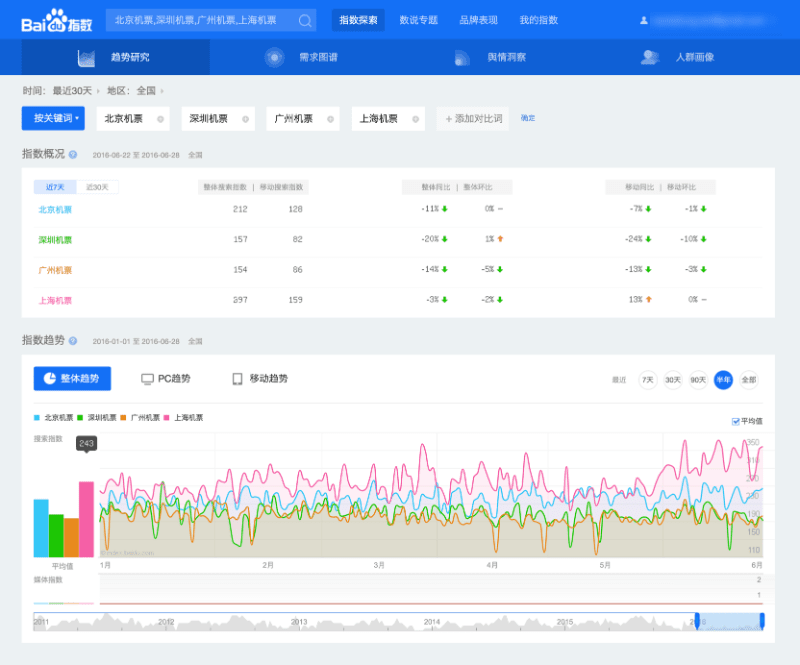
Baidu Index (Baidu’s Google Trend equivalent) can provide many interesting insights for keyword research. Here are a some cool things you can do with Baidu Index:
Baidu Index helps you visualize related keywords’ relevancy and popularity in a bubble chart.
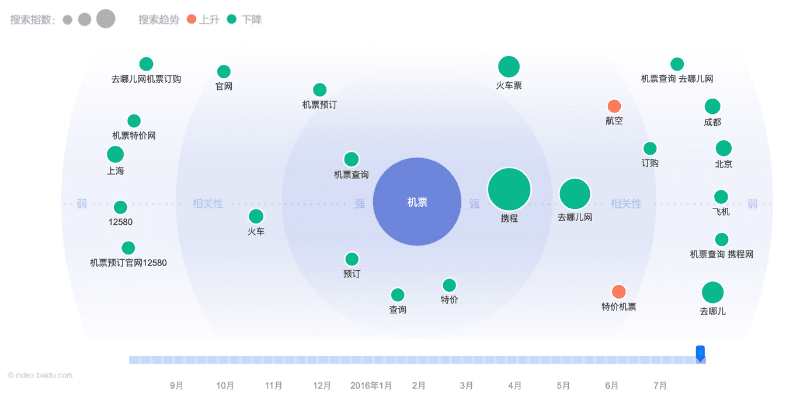
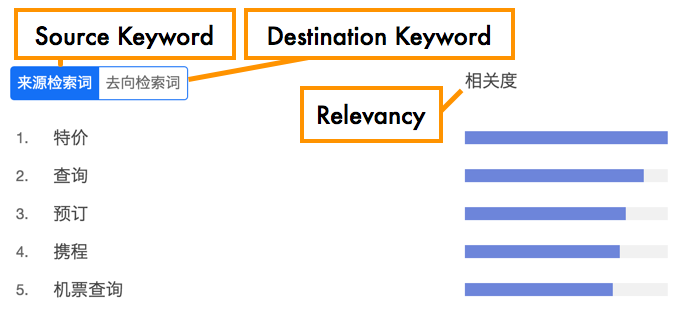
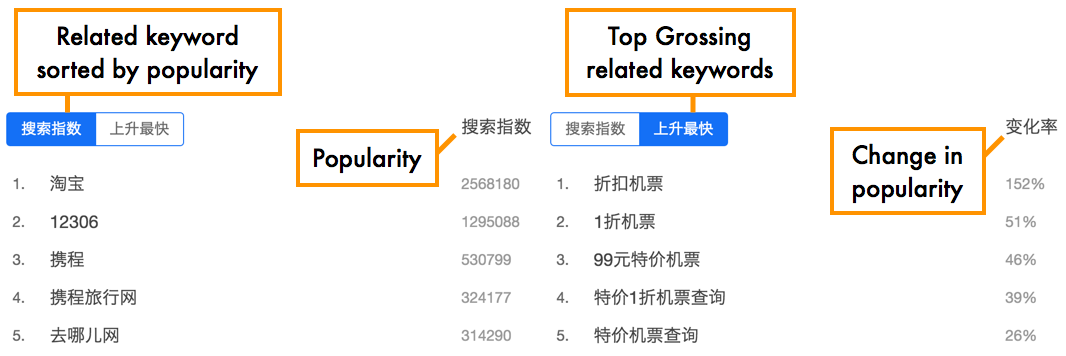
View search trends for desktop, mobile, or overall for the most recent 5 years. Media mentions and important events related to the keyword are available as well.
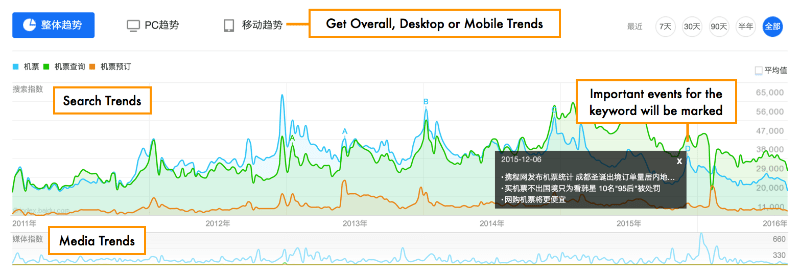
The image below shows a comparison of search demand for the keyword “机票” in Shenzhen (Blue) , Shanghai (Green) , Beijing (Orange) and Chengdu (Pink).

The image below shows search demand for keyword “机票” (plane tickets), “机票查询” (plane ticket enquiry) and “机票预订” (book plane tickets) for each gender and age group:
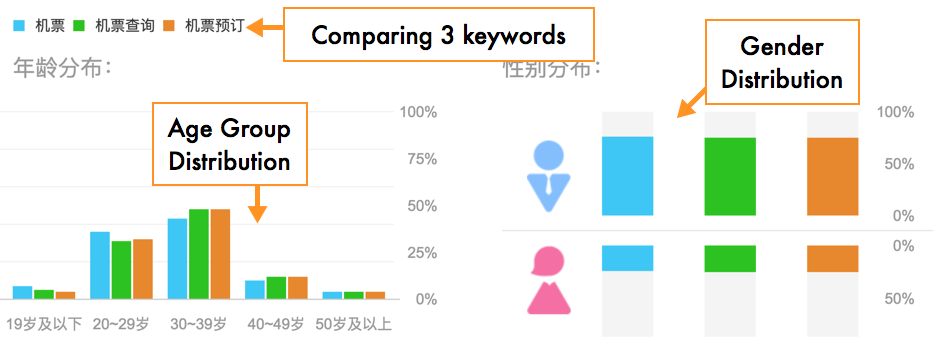
The main disadvantages of using Baidu Index is it’s limited to querying only 5 keywords at a time, and data can not be exported
You only need a Baidu account to access Baidu Index. Learn how to create a Baidu account in our Baidu Webmaster Tools article
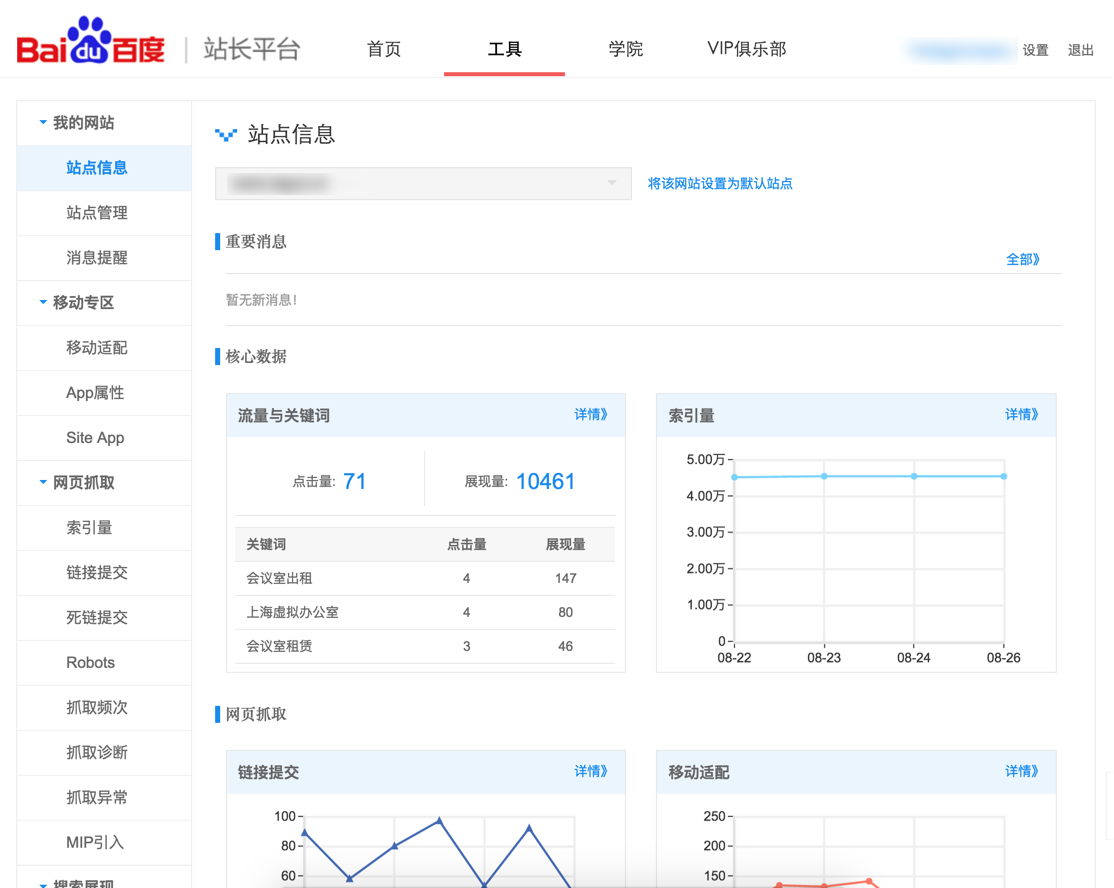
If you’ve verified your website with Baidu Webmaster Tools, you can get quite a bit of keyword data for your websites. Since Baidu started withholding organic keyword referral data (similar to Google’s (not provided) phenomenon), it’s no longer possible to see which organic keywords are bringing you traffic in your web analytics software (such as Google Analytics, Adobe Omniture, or Baidu Tongji).
Thankfully, Baidu Webmaster Tools still provides this data, making it an invaluable data source for Baidu SEOs.
Using Baidu Webmaster Tools can be a great starting point for Baidu SEO projects. However, the amount of data you can get here will depends on how well your site is ranking on Baidu. If the site has no existing traffic or rankings on Baidu, no data will be available.
Some common uses of Baidu Webmaster Tools’ keyword data:
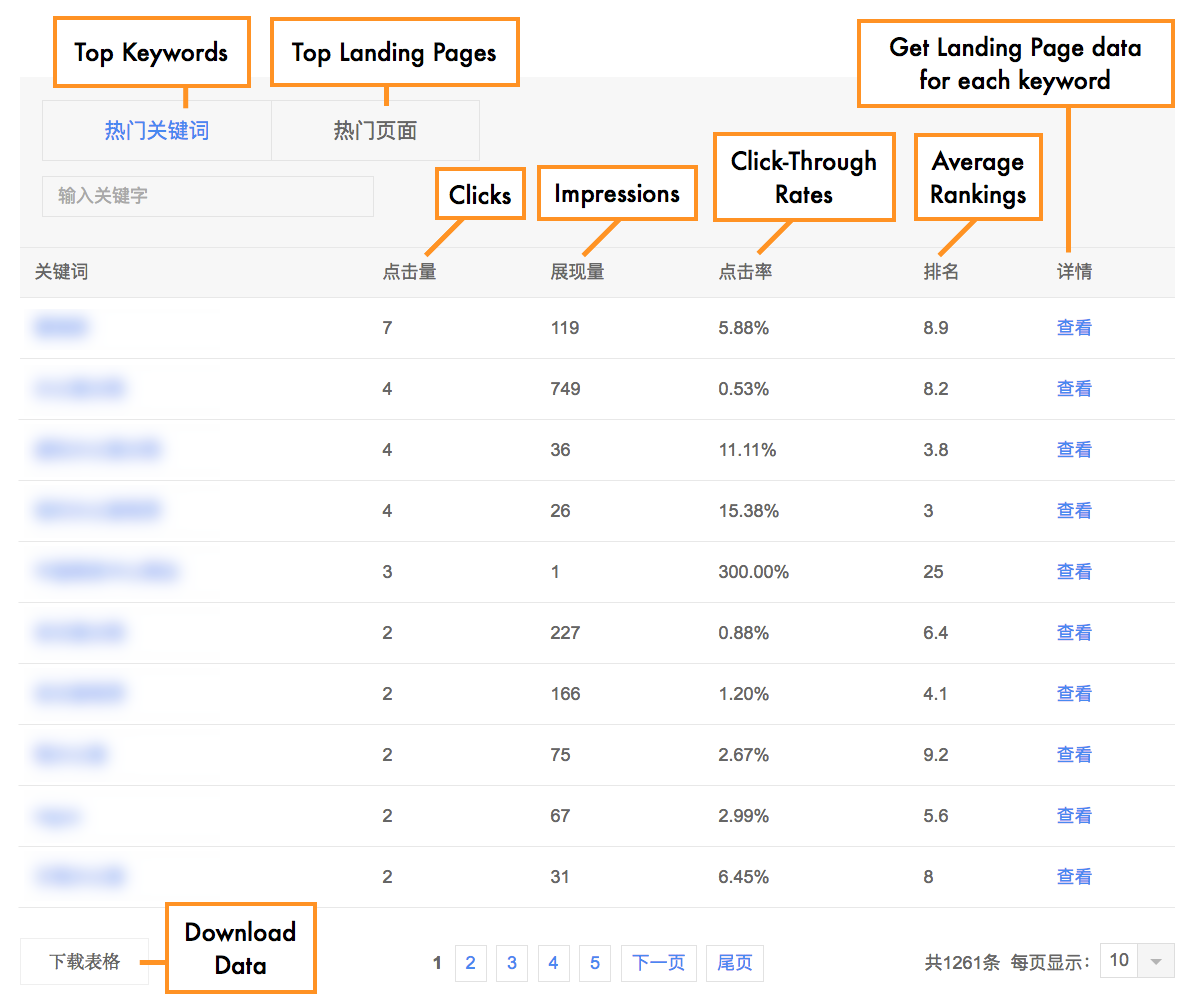
Check out our Baidu Webmaster Tools article or this article from Search Engine Watch to learn more
Just like Google Adwords Keyword Planner, Baidu offers their own tool that provides keyword data. Although the tool is aimed at helping marketers buy search ads on Baidu, it can still be extremely useful for SEO keyword research as well. Just plug in keywords from your seed list to generate hundreds more keyword ideas.
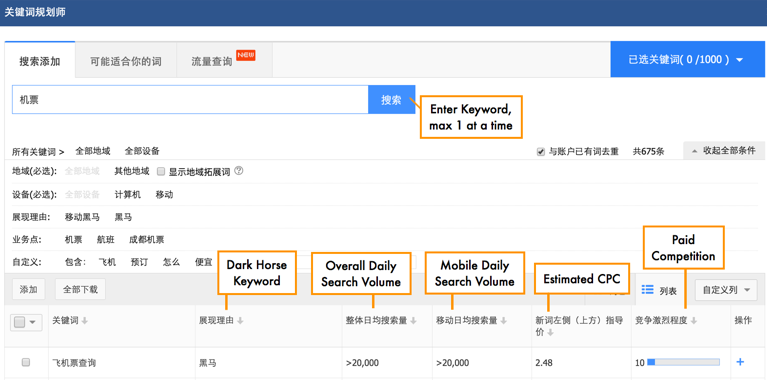
Unfortunately, there are a number of significant downsides to using this tool. In contrast to Google Adwords Keyword Planner, Baidu Keyword Planner only supports searching for a single keyword at a time. There’s no way to upload a list of keywords to get search volumes back for all of them.
Worst of all, to get access to Baidu’s Keyword Planner you will have to login to a Baidu PPC account, which requires a valid China business registration. So if your site doesn’t have a physical presence in China officially registered with the government, you’re out of luck on your own. Luckily, you can still work with an official overseas Baidu PPC reseller to obtain access for you, but either way, users must have an active paying PPC account to get any data at all.
Another way you can get keyword ideas is to utilize search suggestions and related searches.


Search suggestions and related searches can sometimes provide a few long-tail keyword ideas that aren’t available in Baidu keyword planner. However, since it can be a rather time-consuming process, we generally do not recommend using it extensively. Fortunately, based on our experience the majority of keywords from Related Searches are also provided by Baidu Keyword Planner.
With the tools above you should be able to get a decent list of keywords you can target on Baidu. However, we expect most readers to find these tools very difficult to use for the following reasons:
We totally understand your pain in doing Chinese SEO. That’s why we've developed extensive Baidu keyword research capabilities within Dragon Metrics specially designed for international marketers. With Dragon Metrics Keyword Research Tools, you can:
English translations of all Chinese keywords are available next to each keyword displayed, so even marketers that cannot read Chinese can still conduct keyword research! No licenses or business registration is required, and the sign-up process take less than a minute.
The Organic Keywords Report displays all the keywords the domain is ranking for on Baidu.
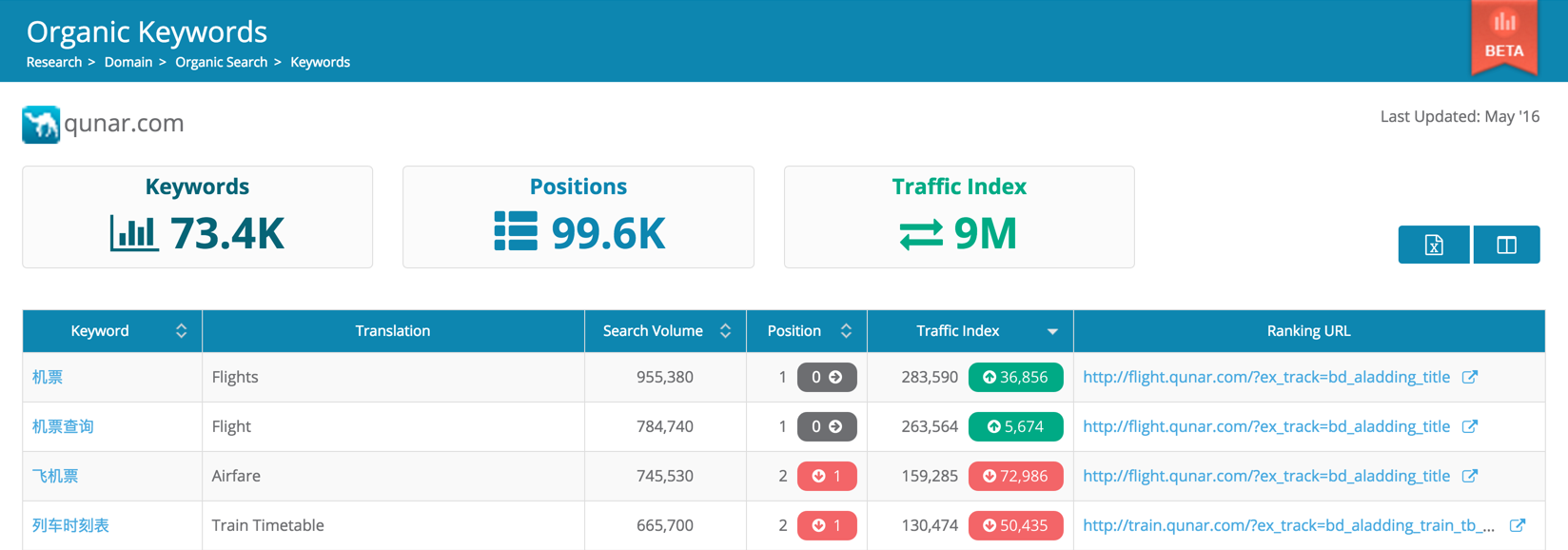
Dragon Metrics also provides the top 50 organic competitors for every domain to help discover even more keyword ideas
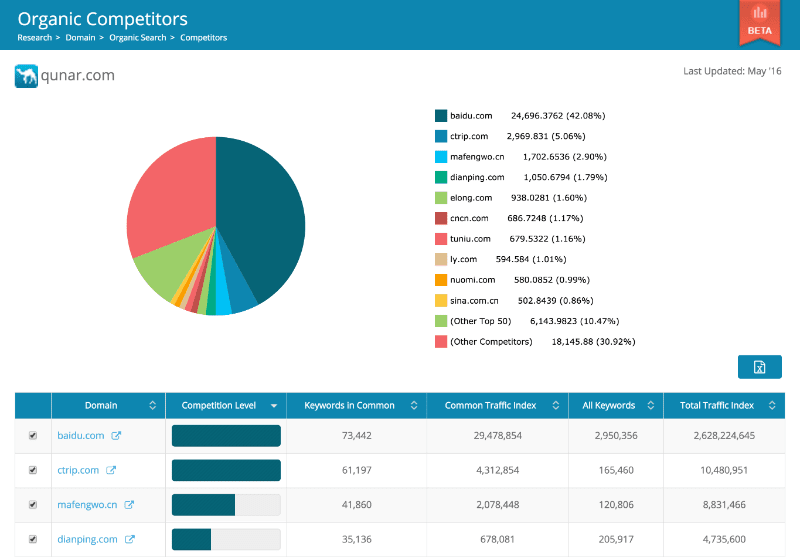
In-depth insights for each keyword are provided as well, such as Search Volume, Competition, Organic Difficulty, SERP Score (Rich Snippets usage on SERPs), and more.
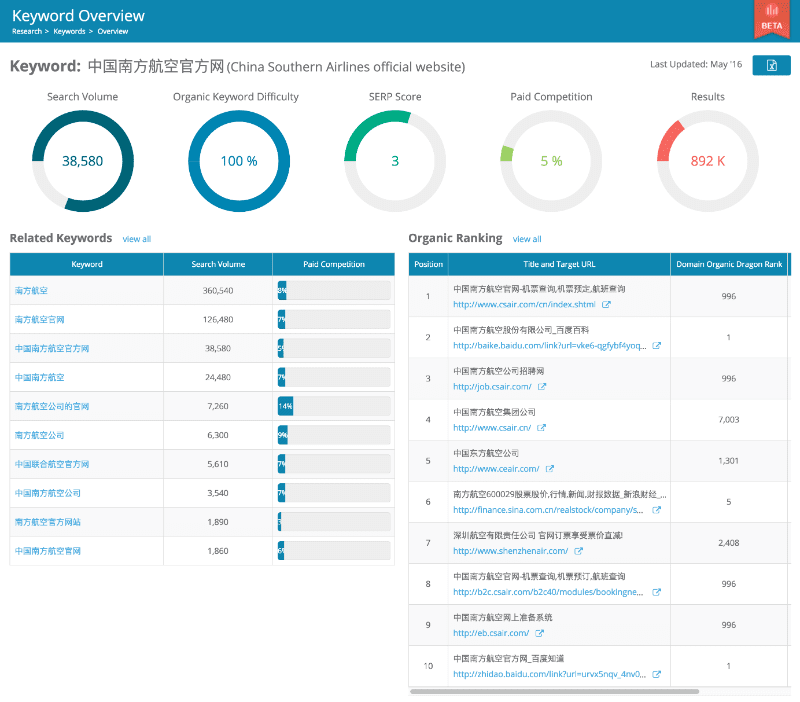
All data comes directly from Baidu Keyword Planner, so you have the most up-to-date data in an easy-to-use interface.
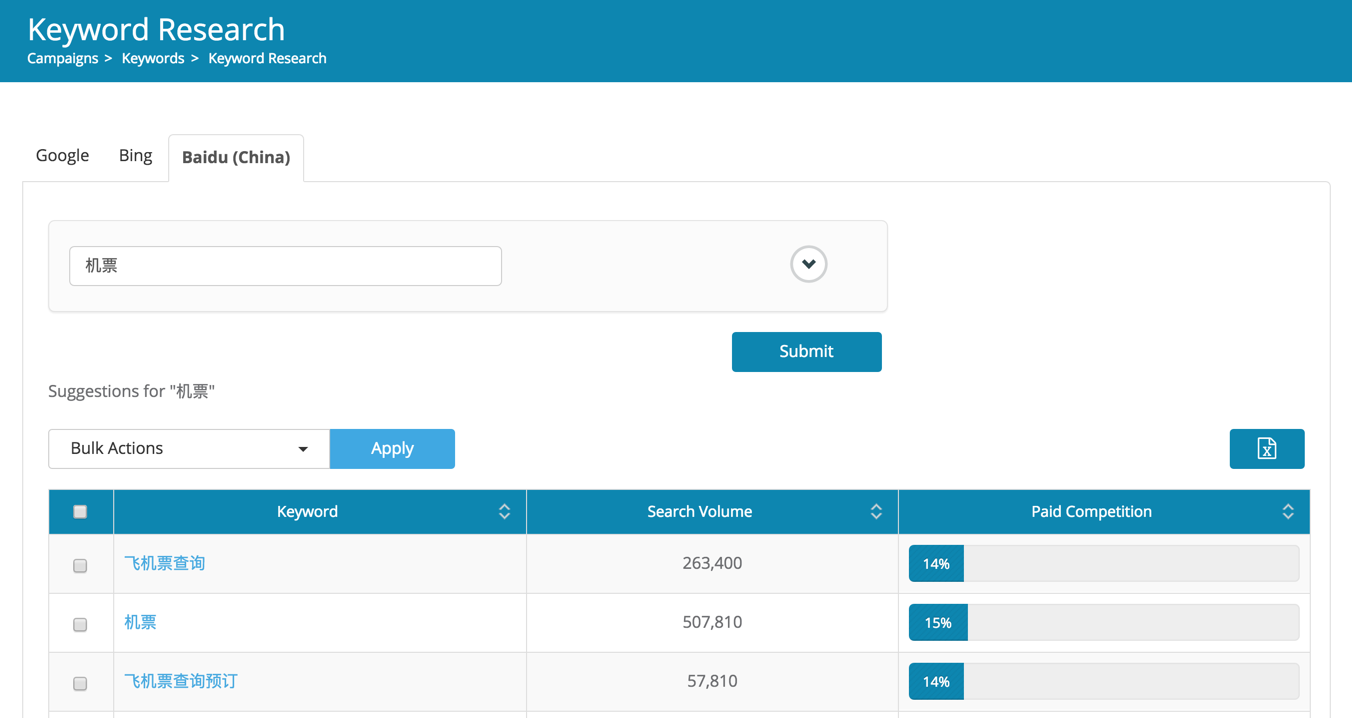
Keyword research is a vital part of any SEO strategy, since understanding how potential customers can find your website on search engines will dictate your future SEO efforts. The same basic keyword research process used Google can be used for Baidu, but the specific methods and data sources differ. Instead, you will need to focus on more long tail keywords, analyze a different set of metrics, and utilize different tools to achieve the best results.
Chapter 3 : Technical / On-Page SEO
![]()
Chapters
Chapter 1
Chapter 2
Chapter 3
Chapter 4
Chapter 5
Chapter 6
Chapter 7
Chapter 8
Chapter 9
Chapter 10